
Sustainable knitting production is now more than just a trendy idea. It’s changing how the knitting industry works. By 2025, new ideas will make knitting faster. Waste will drop by 30%, and electricity use will fall by 43%. These changes help the Earth and make eco-friendly clothes easier to get. Slow fashion is becoming popular, showing that being green can be creative and smart. With less pollution and better tracking, sustainable knitting production is moving toward a cleaner and clearer future.
Key Takeaways
Sustainable knitting will cut waste by 30% and electricity by 43% by 2025. This makes eco-friendly clothes easier to get.
3D knitting uses less waste and energy. It helps make clothes faster and supports eco-friendly goals.
Circular knitting makes clothes without seams. This saves materials, time, and makes clothes more comfy.
Energy-saving knitting machines cost less to run and pollute less. They make knitting better for the planet.
Picking clothes made from recycled, organic, or plant-based stuff helps the Earth stay healthy.
Technological Innovations in Sustainable Knitting Production
The knitting industry is changing with new technological innovations. These changes make knitting more eco-friendly and efficient. They don’t just improve how things are made—they also cut waste and support sustainability.
Advancements in 3D Knitting Technology
Think about knitwear made in one step with little waste. That’s what 3D knitting technology does. It helps manufacturers create clothes closer to their final shape. This saves materials and uses less energy.
Here’s why 3D knitting is important:
Material Advancements: Scientists are creating smart fabrics and eco-friendly fibers for better products.
Digital Design Tools: Designers use digital tools to plan and improve their ideas faster.
Collaborative Platforms: Online tools link designers, makers, and buyers for a clearer process.
More people want sustainable fashion, so 3D knitting is growing. It’s not just about saving resources—it’s about making clothes that match eco-friendly values.
Advancement Type | What It Does |
|---|---|
Material Advancements | New smart fabrics and eco-friendly fibers improve products. |
Digital Design and Prototyping | Digital tools make designing and testing faster and easier. |
Collaborative Platforms | Online tools connect everyone for a more open process. |
Consumer Awareness | People care more about eco-friendly choices, boosting 3D knitting. |
Circular Knitting for Seamless Garments
Circular knitting is changing how clothes are made. If you’ve worn a knit shirt or dress, you know how comfy seamless clothes feel. This method skips cutting and sewing, saving time, money, and materials.
Why is circular knitting useful?
Comfort and Fit: Seamless clothes feel softer and fit better.
Environmental Sustainability: Waste-free production helps the planet.
Quick Response: Clothes can be made quickly to match what people want.
Circular knitting isn’t just fast—it’s flexible. It’s used for sportswear, medical fabrics, and more.
Advantage | What It Does |
|---|---|
Production Efficiency | No cutting or sewing saves time and money. |
Comfort and Fit | Seamless clothes are more comfortable and fit better. |
Environmental Sustainability | Waste-free production lowers harm to the environment. |
Quick Response and Customization | Clothes can be made quickly and tailored to needs. |
Lower Costs | Fewer workers and machines mean lower costs. |
Versatility | Works for many types of clothes like sportswear and medical fabrics. |
Energy-Efficient Knitting Machines
Energy-efficient knitting machines are improving sustainable knitting. These machines use less electricity, cutting costs and lowering pollution. Studies show making one knitted item uses 0.78 to 1.44 MJ of energy. CO2 emissions range from 0.09 to 0.17 kg per item.
Why are energy-efficient machines important?
They save money by using less power.
They help the environment by reducing pollution.
They make production faster and more accurate.
Factories also use energy-saving ideas like better lighting, which saves 63% of energy. These changes are helping knitting become greener and better for the planet.
Electricity is the main energy source for making clothes.
Making one knitted item uses 0.78 to 1.44 MJ of energy.
CO2 emissions for one item are between 0.09 and 0.17 kg.
Energy savings: 16.4% for clothes, 14.4% for embroidery, and 11.6% for printing.
Better lighting saves the most energy, up to 63%.
Sustainable Materials Changing Knitting Production
The knitting world is changing fast, and sustainable materials are leading the way. Choosing eco-friendly options helps save resources, cut waste, and protect the planet. Let’s look at some exciting materials shaping the future of knitting.
Recycled and Upcycled Fibers
Recycled and upcycled fibers are making knitting greener. These materials turn old fabric scraps or plastic bottles into new clothes. Imagine wearing a sweater made from recycled waste—it’s already happening!
Why recycled and upcycled fibers matter:
The textile industry creates lots of waste every year. Recycling keeps waste out of landfills.
Many brands now use recycled fibers to make eco-friendly clothes.
Non-profits certify companies using recycled materials, building trust.
Scientists are finding ways to turn textile waste into useful materials.
Buying clothes made with recycled fibers supports creativity and responsibility.
Organic Cotton, Wool, and Other Natural Fibers
Natural fibers like organic cotton and wool are popular again. These materials are renewable, biodegradable, and better for the Earth than synthetic ones. Plus, they feel great to wear!
Organic cotton grows without harmful chemicals, making it safer for farmers and soil. Wool keeps you warm in winter and cool in summer. It’s also strong, so your clothes last longer.
Using organic and recycled yarns isn’t just eco-friendly—it supports slow fashion. Slow fashion values quality over quantity and encourages you to treasure your clothes. Choosing natural fibers helps create a greener knitting industry.
Plant-Based and Bioengineered Yarns
Plant-based and bioengineered yarns are the future of knitting. These yarns come from bamboo, hemp, and even algae. They’re light, breathable, and perfect for eco-friendly clothes.
Bioengineered yarns are made in labs to mimic natural fibers. Scientists design them to be stronger, softer, or stretchier for better knitting projects.
These yarns offer a sustainable choice, reducing the need for non-renewable resources. They fit perfectly with the growing demand for eco-friendly fashion.
Tip: Look for labels mentioning plant-based or bioengineered yarns when shopping. It’s an easy way to support sustainability.
By choosing these materials, you’re not just following trends—you’re helping the planet.
Zero-Waste and Efficient Knitting Practices
The knitting world is working hard to cut waste. These new ways save materials and make knitting faster. Let’s see how these ideas are changing knitting for the better.
Whole-Garment Knitting for Waste-Free Production
Imagine a sweater made in one piece without any scraps. That’s what whole-garment knitting does. It skips cutting and sewing, so no fabric gets thrown away. This helps the planet and gives you great clothes.
Whole-garment knitting also makes production quicker. Factories can make stylish clothes faster to meet eco-friendly fashion needs. By using less energy and creating less waste, this method helps the Earth while making cool knitwear.
Did you know? Dyeing and washing fabrics hurt the environment the most. Recycling and cutting waste can make a big difference.
Key Findings | What It Means |
|---|---|
Improvement Scope | Big chance to make knitting more eco-friendly. |
Worst Practices | Air pollution and harmful gases are big problems. |
Environmental Impact | Dyeing and washing harm nature the most. |
Policy Recommendations | Recycling and reusing chemicals are very important. |
Managerial Motivation | Managers are encouraged to care more about the environment. |
Closed-Loop Recycling in Knitting
Closed-loop recycling is a smart way to reuse materials. It lets things like fibers and dyes be recycled fully, cutting waste and pollution. For example, recycled lyocell fibers from denim are stronger and finer than regular ones.
This method isn’t just good for the planet—it saves money too. It costs 50% less than older ways of recycling. Choosing clothes made with closed-loop recycling helps both the Earth and your wallet.
Recycled lyocell fibers are finer and stronger than others.
Costs drop by half compared to older recycling methods.
It fixes problems like weak fibers and pollution from old techniques.
On-Demand and Custom Production Models
Ever wanted a sweater made just for you? On-demand knitting makes it happen. It uses AI to design patterns based on what you like. This is great for unique, custom-fit clothes.
On-demand production also stops waste from unsold clothes. Factories only make items when you order them. This saves materials and gives you exactly what you want.
You can pick special colors and textures for unique clothes.
On-demand knitting reduces waste and extra production.
These zero-waste ideas are helping knitting become greener. Whole-garment knitting, closed-loop recycling, and on-demand production are making a better future for the planet and for you.
Eco-Friendly Dyeing and Finishing Techniques
The way fabrics are dyed and finished affects the environment. Using eco-friendly methods can lower pollution and save resources. Let’s look at some new ideas improving textile production.
Waterless Dyeing Innovations
Traditional dyeing uses a lot of water—up to 200 liters per kilogram! Waterless dyeing, like supercritical CO2 dyeing, uses carbon dioxide instead of water. This method cuts water use and reduces harmful chemicals.
Impact Category | Traditional Dyeing | Waterless Dyeing (Supercritical CO2) |
|---|---|---|
Water Consumption | Up to 200 liters/kg | 60% less water used |
CO2 Equivalent Emissions | Higher | 40% fewer emissions |
Chemical Usage | High | 90% fewer chemicals |
Energy Use | Substantial | Lower temperatures |
Waterless dyeing saves water and helps with pollution problems. It’s better for the planet and the knitting industry.
Natural and Plant-Based Dye Alternatives
Do you know where your clothes’ colors come from? Many dyes are synthetic and bad for nature. Natural dyes, like turmeric and marigold flowers, are safer and eco-friendly.
These dyes are good for the Earth and look great too:
Natural Dye | Color Fastness to Wash | Quality Rating | Tensile Force Improvement |
|---|---|---|---|
Turmeric | 3 | N/A | N/A |
Marigold Flowers | 3/4 | N/A | N/A |
Pomegranate Peels | 4 | 87.4% | 15% |
Choosing clothes with natural dyes helps reduce chemical pollution.
Low-Impact Finishing Processes
Finishing gives fabrics their final look but uses many resources. Low-impact finishing methods use less water, energy, and chemicals.
Metric | Low-Impact Percentage | High-Impact Percentage |
|---|---|---|
Energy | N/A | |
Chemicals | 29% | 24% |
Water Consumption | 71% | N/A |
To make finishing greener:
Use ozone or smart foam systems.
Pick fabrics needing less treatment.
Choose ZDHC-certified chemicals.
These steps make finishing better for the environment and the knitting industry.
Ethical and Social Responsibility in Knitting Production
Promoting Fair Labor Practices
Fair labor means workers are treated well and paid fairly. Sadly, some factories still exploit workers, especially in poorer countries. Workers deserve safe workplaces and respect.
You can help by choosing brands that care about their workers. Look for labels like Fair Trade or WRAP. These show the company values fair treatment and safety for employees.
Tip: Check for fair labor labels when buying eco-friendly knitwear. It’s an easy way to support workers.
Supporting Local Communities Through Knitting
Knitting can help small communities grow. Many small knitting businesses give jobs and training to rural people. Supporting them helps artisans and keeps old knitting skills alive.
Some brands work with local groups to make eco-friendly clothes. These partnerships help locals and promote sustainable fashion. You can find unique, handmade items that support good causes.
Callout: Buying from small knitting businesses helps families and communities succeed.
Ensuring Transparency in Supply Chains
Knowing how and where clothes are made is important. Many brands now use tools like QR codes to share production details. These tools show what chemicals were used and how items were made.
The Fashion Transparency Index ranks brands on their openness about human rights and the environment. This helps you find brands that care about ethical practices.
Transparency Tool | What It Offers |
|---|---|
QR Codes | Quick info on chemicals and production. |
Fashion Transparency Index | Rates brands on human rights and environmental policies. |
People are willing to pay more for honest brands. About 9% avoid buying clothes without chemical info. Choosing transparent brands supports fairness and pushes the industry to improve.
The knitting world is changing in amazing ways. New tools like AI and automation, along with recycled materials and closed-loop systems, are improving how clothes are made. These changes aren’t just cool—they’re making knitting smarter, greener, and more honest.
By 2025, even bigger improvements will happen. Certifications such as OEKO-TEX® and Bluesign® are becoming common. More people want eco-friendly fabrics, pushing companies to find better ways to make clothes. This helps create a cleaner and healthier planet.
You can help make a difference too. Whether you design, make, or buy clothes, choosing sustainable options helps the Earth and supports fair practices. Together, we can create a future that’s both stylish and kind to the planet. 🌱
FAQ
What is sustainable knitting production?
It’s making clothes in ways that help the planet. Eco-friendly materials and methods save resources and cut waste.
How can I support ethical practices in the knitting industry?
Choose brands that treat workers fairly and care for nature. Look for labels like Fair Trade or WRAP to know they’re responsible.
Are recycled fibers as durable as new ones?
Yes, recycled fibers are strong and last long. Scientists have made them just as good as new materials.
Why is zero-waste knitting important?
It stops fabric waste and lowers pollution. Methods like whole-garment knitting and recycling make clothes without hurting the Earth.
What are plant-based yarns made from?
They’re made from bamboo, hemp, or algae. These yarns are soft, breathable, and great for eco-friendly clothes.



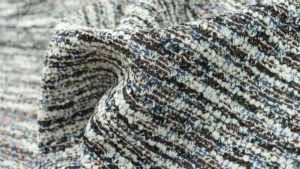
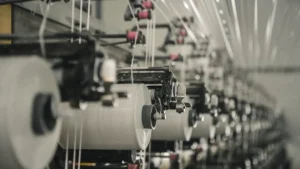
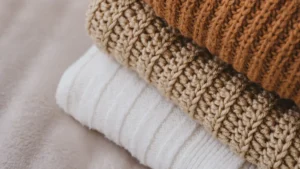

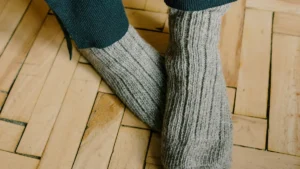
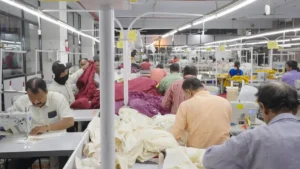

34 thoughts on “Sustainable Knitting Production Trends Shaping 2025”
Pingback: Dressed in Knits: How Professional Knitwear Factories Build the Perfect Knit Dress
Pingback: Knit Dresses for Women: Year-Round Staples That Redefine Comfort and Style
Pingback: Top Knitwear Manufacturer in France
Pingback: The Best Norwegian Knitwear Manufacturers for Quality and Style
Pingback: Top Knitwear Manufacturer in Denmark for Sustainable Style
Pingback: Top Austrian Knitwear Factories for Quality and Craftsmanship
Pingback: Slovenia’s Best Knitwear Manufacturers for Quality and Innovation
Pingback: 10 Top Knitwear Manufacturers in Portugal for 2025
Pingback: Cyprus’s Top Knitwear Manufacturers for Quality and Innovation
Pingback: Top 10 Knitted Hat Manufacturers for Bulk Orders in 2025
Pingback: Finding the Best Knitwear Fabric Blends for Your Clothing Line
Pingback: 10 Florida Knitwear Manufacturers Vetted for Excellence
Pingback: 10 Must-Know Knitwear Manufacturers in Pennsylvania
Pingback: Best Knitwear Producers to Know in North Carolina
Pingback: Best Places to Source Knit Garments in Riverside
Pingback: Best Knitwear Factories in Austin for Quality and Craftsmanship
Pingback: Discover trusted shoulder knit women's light pink off the shoulder oversized sweater manufacturer options
Pingback: Las Vegas Sweater Supplier Rankings for 2025
Pingback: 10 Custom Knitwear Producers Richmond Locals Love
Pingback: Jacksonville’s Top Knitwear Factories for Small and Large Orders
Pingback: Louisville’s Top Sweater Supplier Picks for 2025
Pingback: Hartford’s Leading Custom Knitwear Producers Ranked
Pingback: Paris’s Best Sweater Suppliers for Fashion Retailers
Pingback: 10 Best Knitwear Factories in Berlin for Quality and Innovation
Pingback: 10 Top Supplier Choices for Knit Garments in Amsterdam
Pingback: Top Manufacturer Making Copenhagen’s Coziest Knit Apparel
Pingback: 10 Top Sweater Suppliers in Lisbon for 2025
Pingback: 10 Leading Custom Knitwear Producers in Warsaw for 2025
Pingback: Top Supplier Making Stockholm’s Knitwear Dreams Real
Pingback: Top Sweater Supplier Picks in Frankfurt for Fashion Retailers
Pingback: Top Knit Apparel Manufacturers in Bucharest for 2025
Pingback: Discover the Finest Knitwear Producers in Geneva
Pingback: Knit Cotton Fabric: Uses, Construction, and B2B Applications
Pingback: 10 Custom Knitwear Producers in Brno Worth Considering